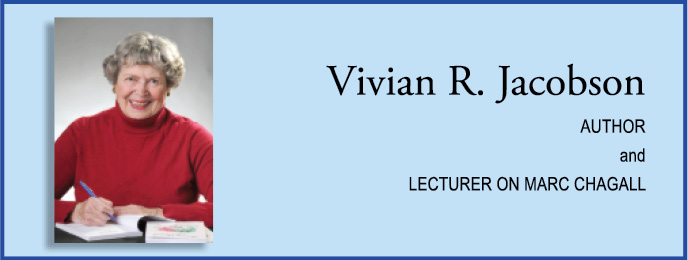MARC CHAGALL
(1887 – 1985)
Marc Chagall was born into a Hasidic Jewish family on July 7, 1887, in Vitebsk, Belarus. The wonderful and vibrant memories of his early childhood were expressed in his artwork throughout his career. Oil paintings, ceramics, lithographs, posters, stained glass windows, tapestries, mosaics, book illustrations and works for the theater, ballet and the opera were the mediums in which he chose to express the human experience of life and love. In these different mediums he showed the magical realism that brought together biblical stories, people, angels, flowers, animals and musical instruments.
Major Chagall works live in cities and museums all over the world. Some of these are The Jerusalem Windows at the Hadassah Medical Center, the Peace Window at the United Nations, The Four Seasons mosaic and the Job tapestry in Chicago, murals for the Metropolitan Opera House in New York, and The St. Stephan Windows, Mainz, Germany. Throughout his career, Chagall, the greatest colorist in the 20th Century, had exhibitions in the major art institutions of the world. His many admirers found a spiritual connection to the artist. Like the subjects that he brought together in art, he brought people together to view his message of hope, peace, reconciliation and love.
The survivor of pogroms, anti-Semitism, the Russian Revolution, two World Wars and an escapee from the Nazis in 1941, Chagall still had hope for humanity and reconciliation. He never exhibited hate or anger for his oppressors. The way the world affected him personally deepened his determination to pour out his love for all people and to strive for understanding, hope, and peace, through his artistic talents. He brought this love to us in every artwork. Some people give so much to the world while they are living, that when they are no longer on this earth they continue to live in the hearts and minds of mankind. Such was the distinction and legacy of Marc Chagall.
